How Moors murderer Brady had access to vulnerable teens in jail
- Published
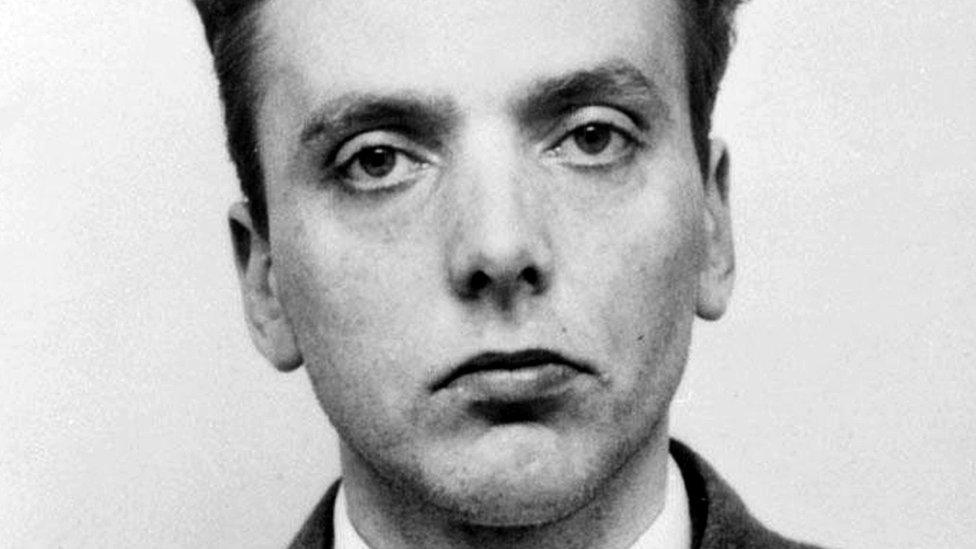
Moors Murderer Ian Brady was able to mix with vulnerable borstal boys in Wormwood Scrubs prison for more than five years, newly released Home Office files reveal. Even after one young prisoner alleged that Brady had had sex with him, no action was taken for several months, the BBC's Sanchia Berg reports.
For decades he was Britain's most notorious murderer.
Ian Brady and his girlfriend Myra Hindley tortured, sexually assaulted and murdered children in the mid-1960s and buried some of the bodies on Saddleworth Moor, near Manchester.
Following his conviction in 1966, Brady was initially held at Durham prison. He was then sent to Parkhurst, and transferred in 1974 to Wormwood Scrubs in London.
Placed in the segregation unit, used for prisoners likely to be attacked, he began a hunger strike in the summer of 1975, demanding to be moved and allowed to associate with other prisoners.
As he lost weight, he was moved to the prison hospital. He was allowed to stay there even after he began eating again, in a room on the Mental Observation Landing, known as G2.

At this time, boys from Feltham Borstal would be sent to Wormwood Scrubs hospital if they were suffering from mental health problems. They could be as young as 15 - a similar age to some of Brady's victims.
As early as 1976, the prison's principal medical officer had spotted the problem.
"He takes an unusual interest in any adolescent inmate who may be located on the landing and his influence in such a situation is certainly not a wholesome one," he wrote in a report dated 2 September.
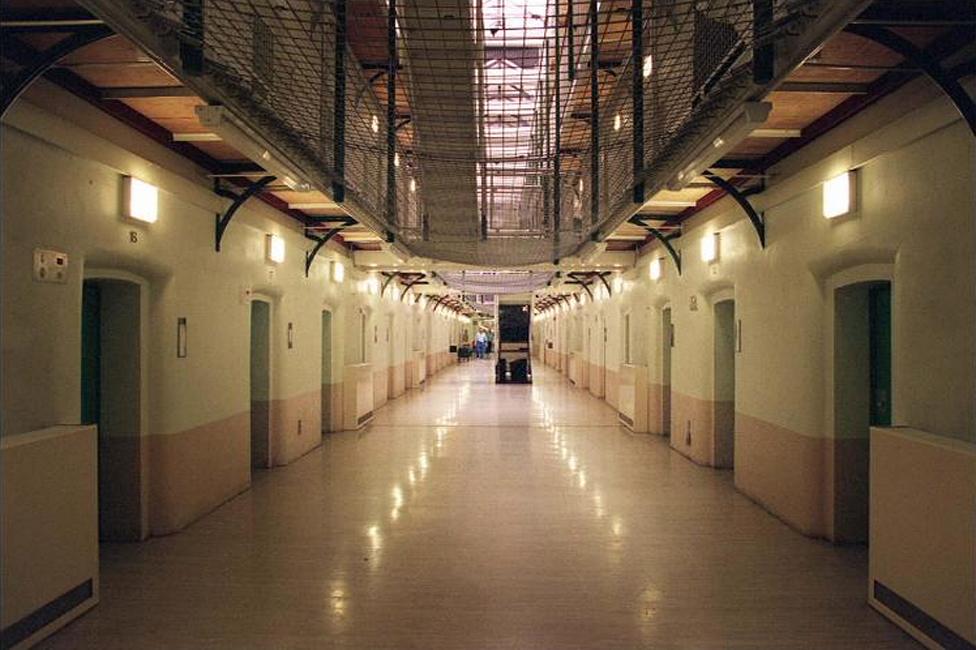
Brady was keen to leave the Wormwood Scrubs segregation unit
The staff had had to move boys off the landing to get them away from him, he added.
But despite numerous objections made by staff and others over the years, arguing that Brady should be moved, he stayed on the Mental Observation Landing, and his privileges steadily increased.
Brady was allowed to watch television with other patients and given duties that enabled him to move beyond the landing, cleaning toilets and showers.
He lost his job in autumn 1981, after a young person reported that Brady had had sex with him, and he was moved back to Parkhurst the following year.
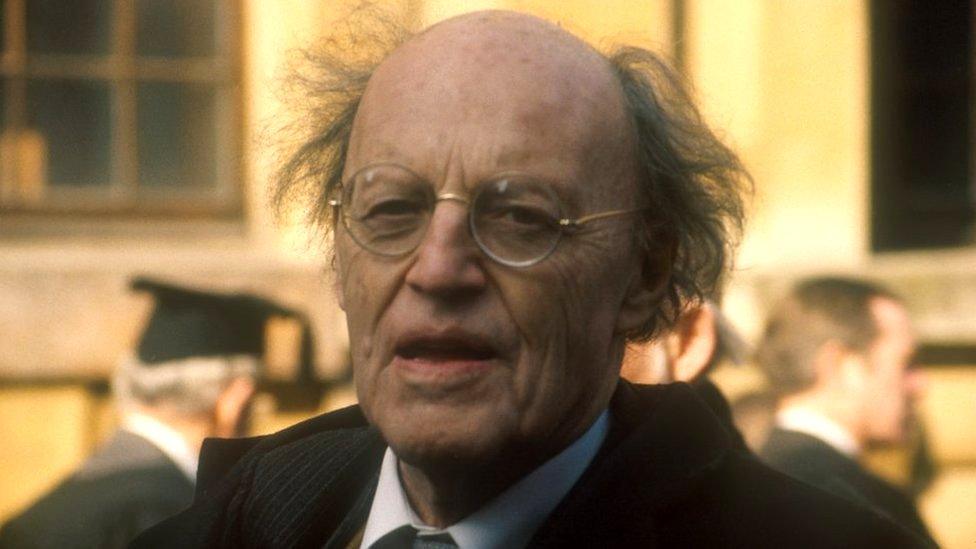
Lord Longford lobbied a series of ministers on Brady's behalf
How was it possible for a prisoner like Brady to be given such treatment?
Part of it has to do with his personality - he was often described as manipulative and arrogant by prison staff. For years he campaigned, complained and threatened in order to get his way. It usually failed, but occasionally it worked.
Brady also benefited from support from the penal reformer, Lord Longford, a former Labour cabinet minister. The Home Office papers reveal how Longford lobbied ministers, including the home secretary, on Brady's behalf.

When Brady first arrived at Durham on 6 May 1966 he was described as "a fairly tall person with a tendency to break into a cold smile without apparent reason… Quite unemotional."
He succeeded in getting a degree of special treatment. He persuaded the prison's welfare officer to get him homoerotic novels, as well as the works of Machiavelli - the Italian Renaissance writer who described how a ruler could maintain his grip on power by unscrupulous means. He was also given private tutoring in German by academics from Durham University - until the prison education service was asked to pay for it.

Myra Hindley eventually stopped writing to Brady
But Brady didn't achieve his main aim at that time, which was to see Myra Hindley for "conjugal" visits. She was in Holloway prison, over 250 miles away. In protest, Brady isolated himself and refused to associate with other prisoners. He even asked for dark glasses and ear plugs so he could shut out the world entirely. In 1969, 1970, 1971 he went on hunger strike. None of it worked.
After Myra Hindley stopped writing to Brady, he changed his campaign. Instead, he started lobbying to get to Broadmoor, the secure hospital. Doctors were reluctant. They considered him a psychopath, who would not benefit from treatment.
It was at this time, 1971, that Brady enlisted Lord Longford's help - but the peer couldn't persuade politicians to move him.

Find out more

Four years later, Brady began a new hunger strike at Wormwood Scrubs. Once moved to the prison hospital he allowed himself to be "artificially fed" even though his "hunger strike" formally continued.
He told Lord Longford in September 1975 that he found conditions in the prison "more pleasant and civilised" than in the segregation unit, and on 16 December Longford met Home Secretary Roy Jenkins to relay Brady's request to stay there.
Jenkins responded that "Brady could be assured that he would stay in the prison hospital for as long as he needed to for his health."

Ian Brady en route to court in October 1965
Ten days later, according to the prison records, Ian Brady ended his hunger strike.
Peter Meakings, now in his 80s, was an assistant governor at Wormwood Scrubs at the time. The files show he supervised several of Lord Longford's visits to Ian Brady.
On 12 April 1976 the visit began with Lord Longford "apologising for forgetting to bring cigarettes". "I remember Brady was really angry about that" says Meakings. Brady preferred the French brand, Gauloises, which could be hard to get hold of.
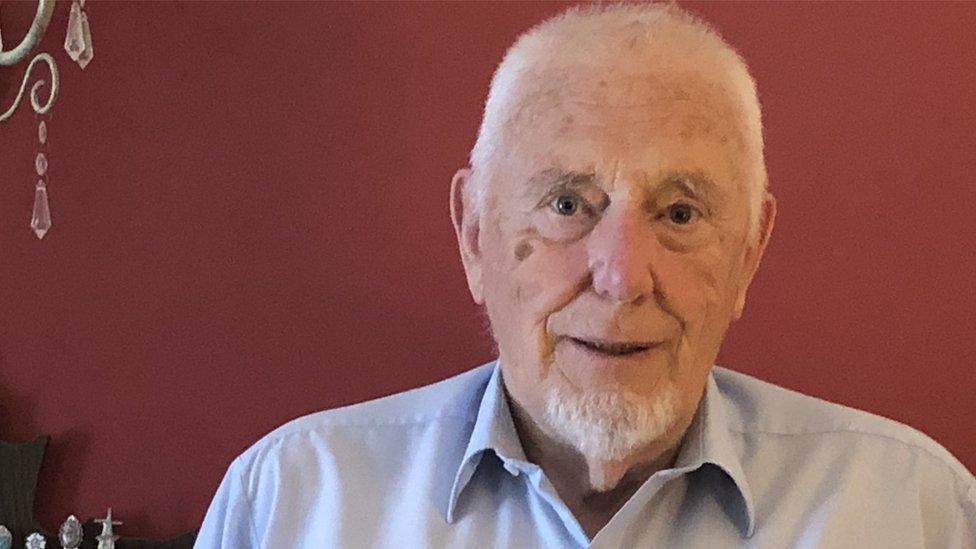
Peter Meakings found dealing with Brady a chilling experience
In his note, Peter Meakings wrote that Brady made "frequent acrimonious comments about the Home Office" and "various offensive remarks concerning individual prison staff". He remembered that Brady seemed very much in charge - telling Longford what to do, and being very curt and abrupt with him.
Peter Meakings says he always kept his distance from Ian Brady, even if the prisoner tried to be friendly. "One of the children he murdered was the same age as my son at the time. I would get an odd feeling, a kind of shiver down my spine, when I was in the room with him."
By September 1976 Brady's health had recovered. In fact he was slightly overweight, as the prison's principal medical officer (PMO) observed. But he stayed in the hospital.

The Moors murders
Brady and Hindley were jailed for life in 1966 for the murders of Lesley Ann Downey, 10, and Edward Evans, 17; Brady was also convicted of killing 12-year-old John Kilbride
It was not until 1987 that they finally admitted the murders of two more children, Keith Bennett, 12, and 16-year-old Pauline Reade
Keith Bennett's body has never been found - his mother's pleas to the murderers to disclose the location were in vain

In December 1977, a new acting PMO wrote to the prison governor saying Brady should be returned to segregation.
Brady wrote to Lord Longford to complain, saying how grateful he had been for the chance to show his "progress", and how much he valued being given "a modest opportunity to integrate in a constructive community of staff I have the highest respect for".
It seems to have worked. Brady stayed on the hospital wing.
In March 1978, the prison's senior medical officer (SMO) expressed concerns about Brady's presence in the prison hospital and his contacts with vulnerable prisoners.
"I deplore his association with young borstal trainees and adult mentally ill patients," the SMO wrote.
"There is little change in his hard remorseless egotistical attitude. He is one of the few men to whom I would attach the label 'evil'."
But the SMO concluded that there was no way of segregating them, given the "therapeutic milieu".

Members of the prison's Board of Visitors were the next to object to Brady's "privileged" treatment, in mid-1978. But the Wormwood Scrubs medical officers told them it was the "best solution to an impossible problem".
The board was unimpressed and said it would make a formal complaint. This led to an exchange between the prison's PMO and the deputy director of the Prison Services Department.
"If he is sent back to the segregation unit he will go on hunger strike and we shall be back to where we were several years ago," the PMO wrote in a letter dated 5 June 1978.
He said he was not too worried about Brady's position "except for one aspect of it and that is his having access to young inmates". He went on: "A malicious newspaper could make great play of it."
In August 1979, the hospital's SMO wanted to discharge Brady. He wrote to the director of prison medical services: "Into ward G2 are admitted both boys and men who are mentally ill. Is it proper to have Brady in with them?"
The SMO agreed Brady might try "blackmail" once again, by going on hunger strike. "But then I would deal with him as I would any other inmate - in the proper ethical medical manner."
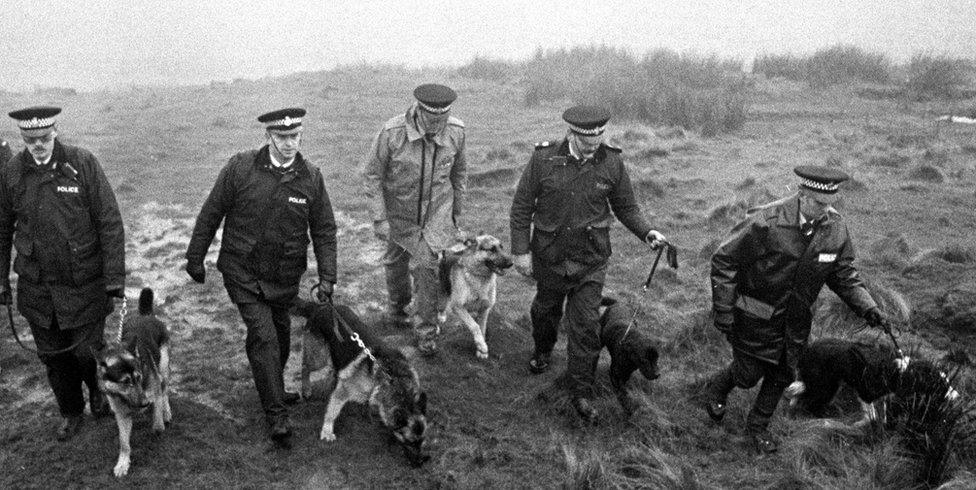
Police search Saddleworth Moor for Keith Bennett's body in 1986
The file doesn't include the director of prison medical services' response.
But five months later, he wrote to the prison's PMO. Boys at Feltham Borstal had been talking about Brady, he said, and wanted to know why Brady had access to "those of tender years".
The PMO wrote back, a fortnight later, with a rather impatient tone.
"This is an old one. We have been over it many times. Under the present circumstances it would be impossible to prevent borstal trainees who are admitted to G2 from coming into contact with Brady."
He added, harshly: "For what it is worth, I doubt if Brady has any effect whatsoever on 'those of tender years'."
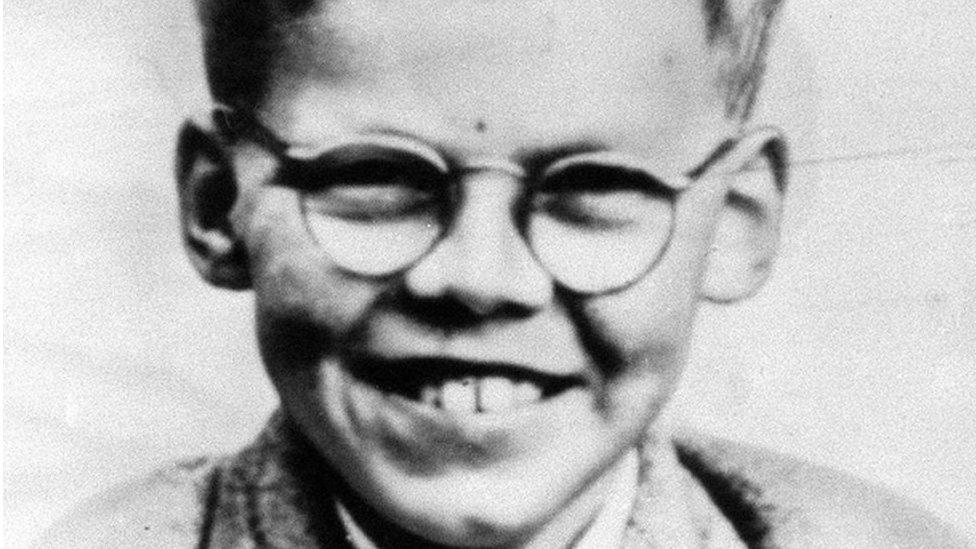
Brady never revealed where Keith Bennett's remains were buried
That confidence was misplaced. A year later, in February 1981, the file shows the PMO was visited by a young prisoner from the landing where Brady lived.
"He was in a very agitated state," runs the PMO's letter to the governor. Another prisoner "wanted to have homosexual relations with him" and knew that Brady had had sex with him "some months ago".
The young man was terrified of what this prisoner might do if he refused - and asked to be moved. He was.
"I am most concerned about Brady," says the PMO's letter. "I never have been happy about locating disturbed boys or young men on the landing. Brady has shown rather too much interest in them in the past."
Knowing the prison layout, Peter Meakings can see how Brady might have been able to have sex with another inmate.
"As the landing cleaner, Brady wouldn't just have had free run of the passageway outside the rooms, where there were officers supervising, he would also have had access to the toilets," he says. There were no toilets inside the cells then. Showers were also separately located.
You may also be interested in:

Even this incident didn't lead to Brady's instant removal from the Mental Observation Landing - he was still there in August, months later. The files do indicate he had lost his job as a landing cleaner by November 1981. Brady complained about this to Lord Longford - who, as before, contacted the Home Office to intervene on his behalf.
This time, there was no private meeting with the home secretary, just a short note from Parliamentary Under-Secretary of State Lord Belstead. He wrote: "I am satisfied that there were good reasons for the decision to remove Mr Brady from his job, and I see no reason to intervene in this matter."
In March 1982 Brady was transferred to Parkhurst, and from there he was later moved to Ashworth secure hospital, where he died in 2017.
Frances Crook, chief executive of the Howard League for Penal Reform, says that the high-profile support Ian Brady enjoyed contributed to an "extraordinary set of circumstances". However, she adds: "What happened, and what he did in prisons, I think, is not extraordinary. Actually, I think it happens and has happened every day for years, and is still happening."
A Ministry of Justice spokesperson said: "There have been huge changes in the criminal justice system in the last 40 years and allegations of sexual assault are taken extremely seriously and reported to the police. Boys under 18 are placed together in youth custody and those aged between 18-21 are held either in young offender institutions with their own age group, or in designated cells or wings in the adult prison estate. We are conducting a review into safeguarding in the youth estate to further improve the welfare of those in our care."
You may also be interested in:
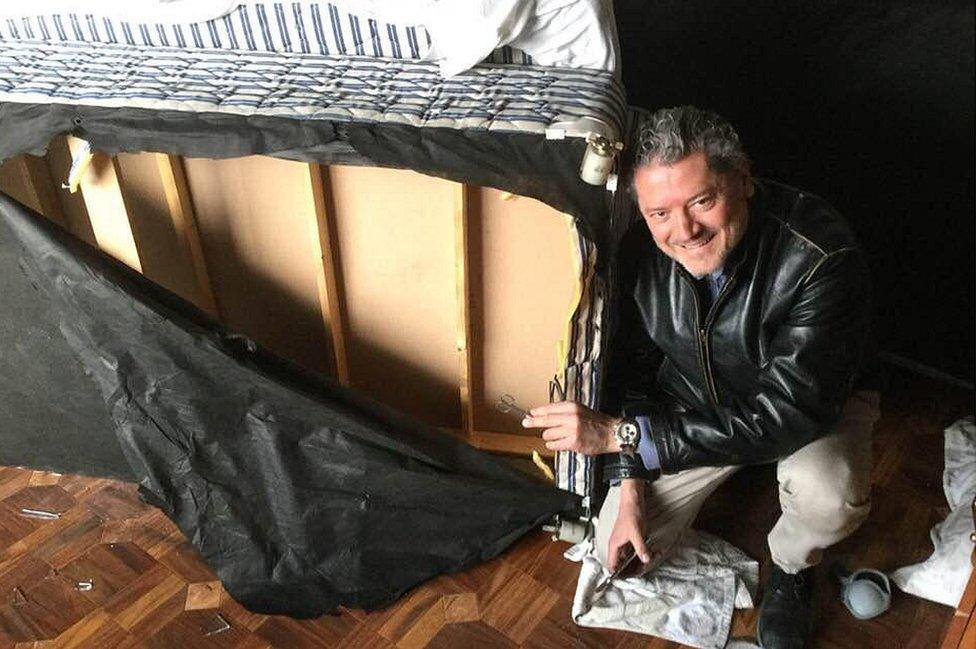
In January 2018, Greek pilot Vasileios Vasileiou checked into a luxury hilltop hotel in Kabul. The Intercontinental was popular with foreign visitors - which is why, on 20 January, Taliban gunmen stormed it, killing at least 40 people. Vasileios explains how he survived.